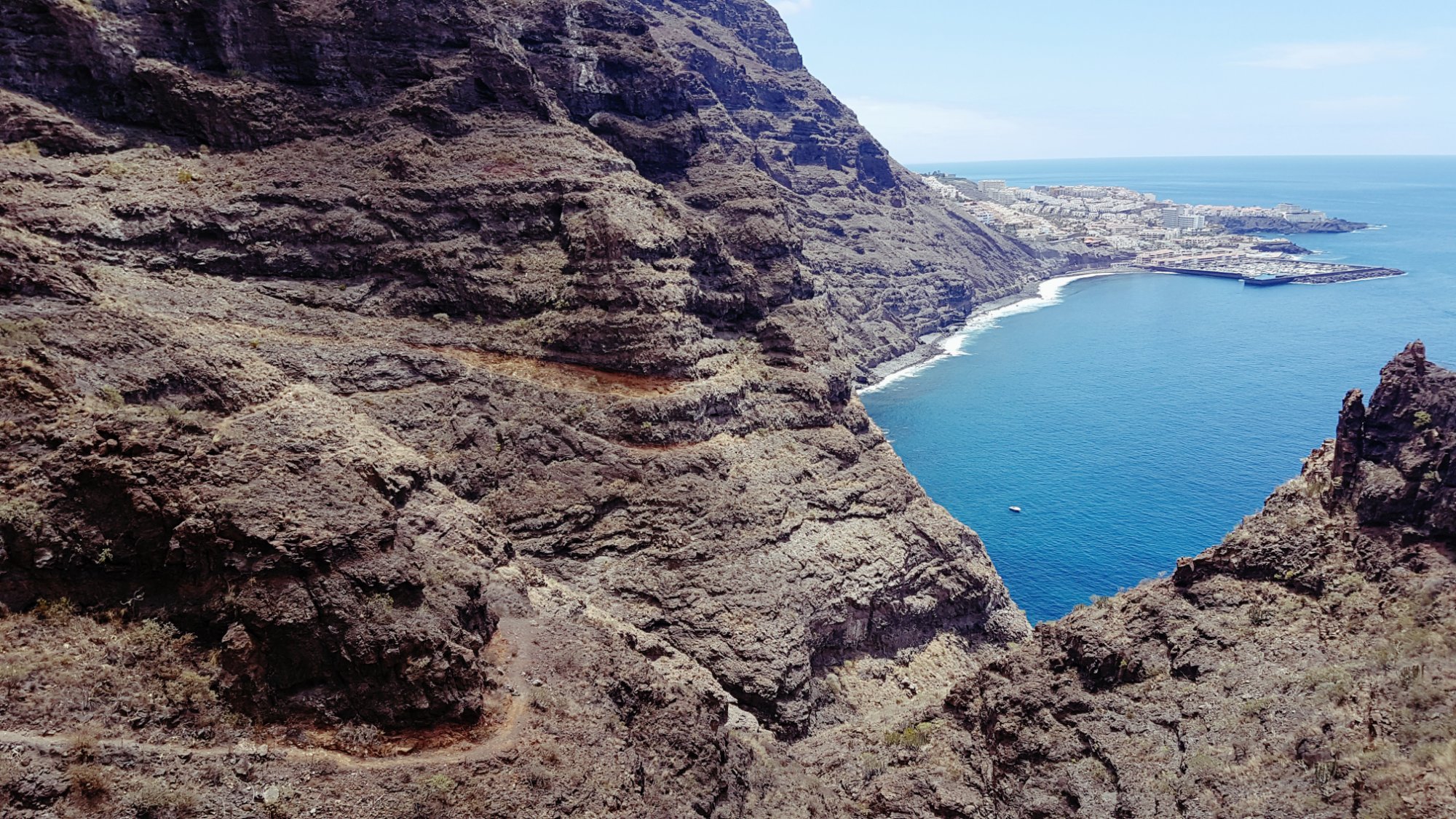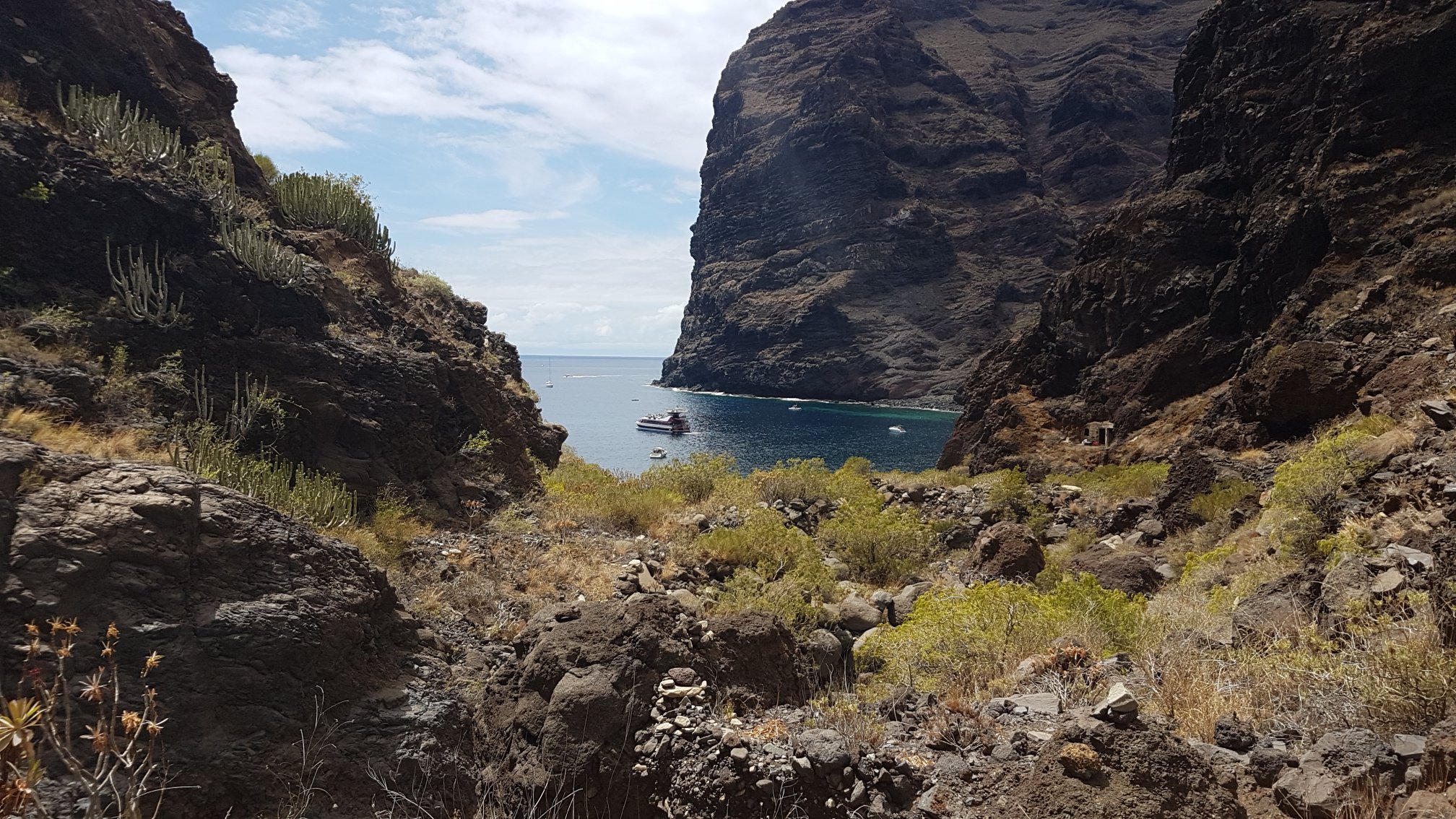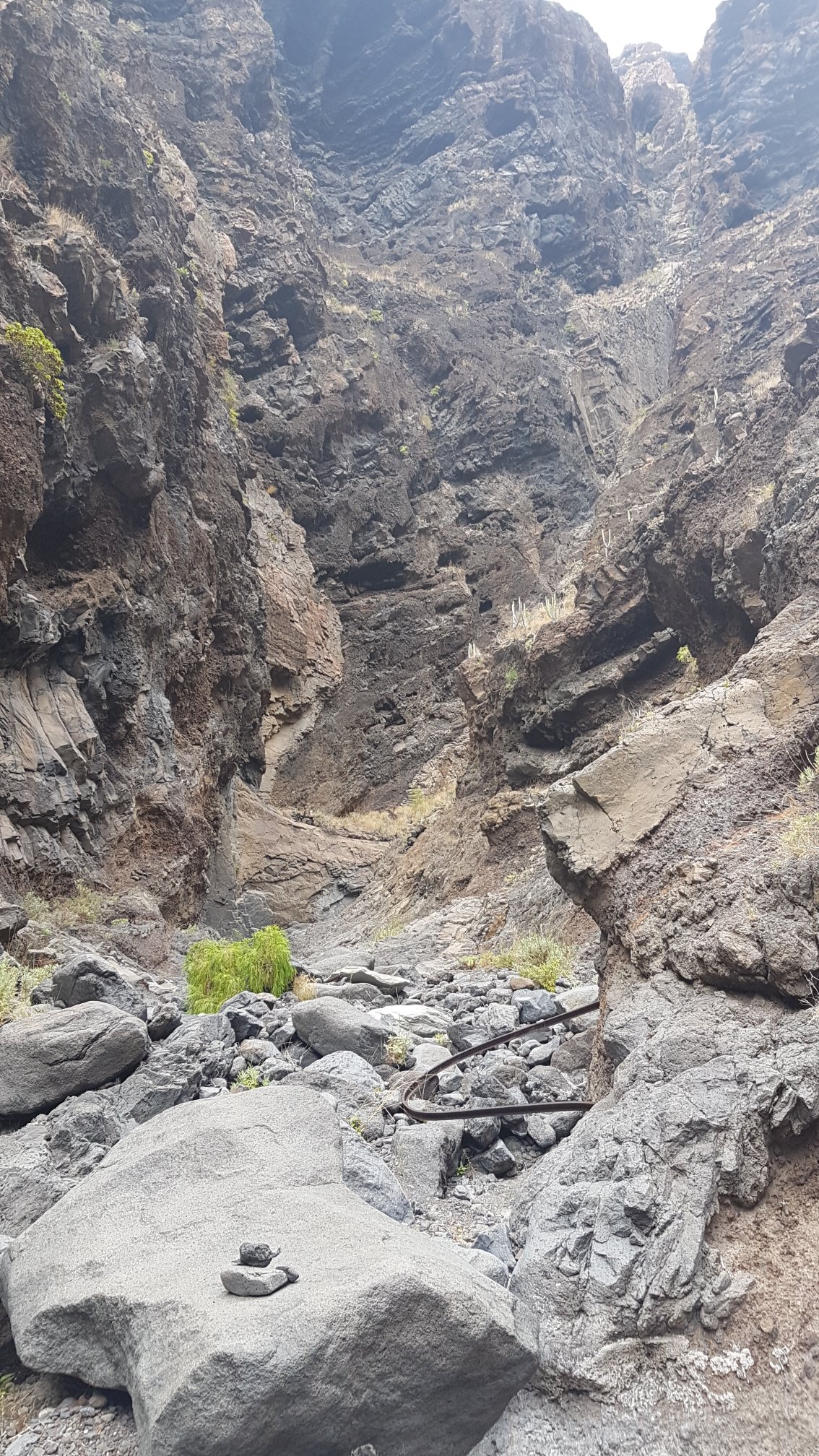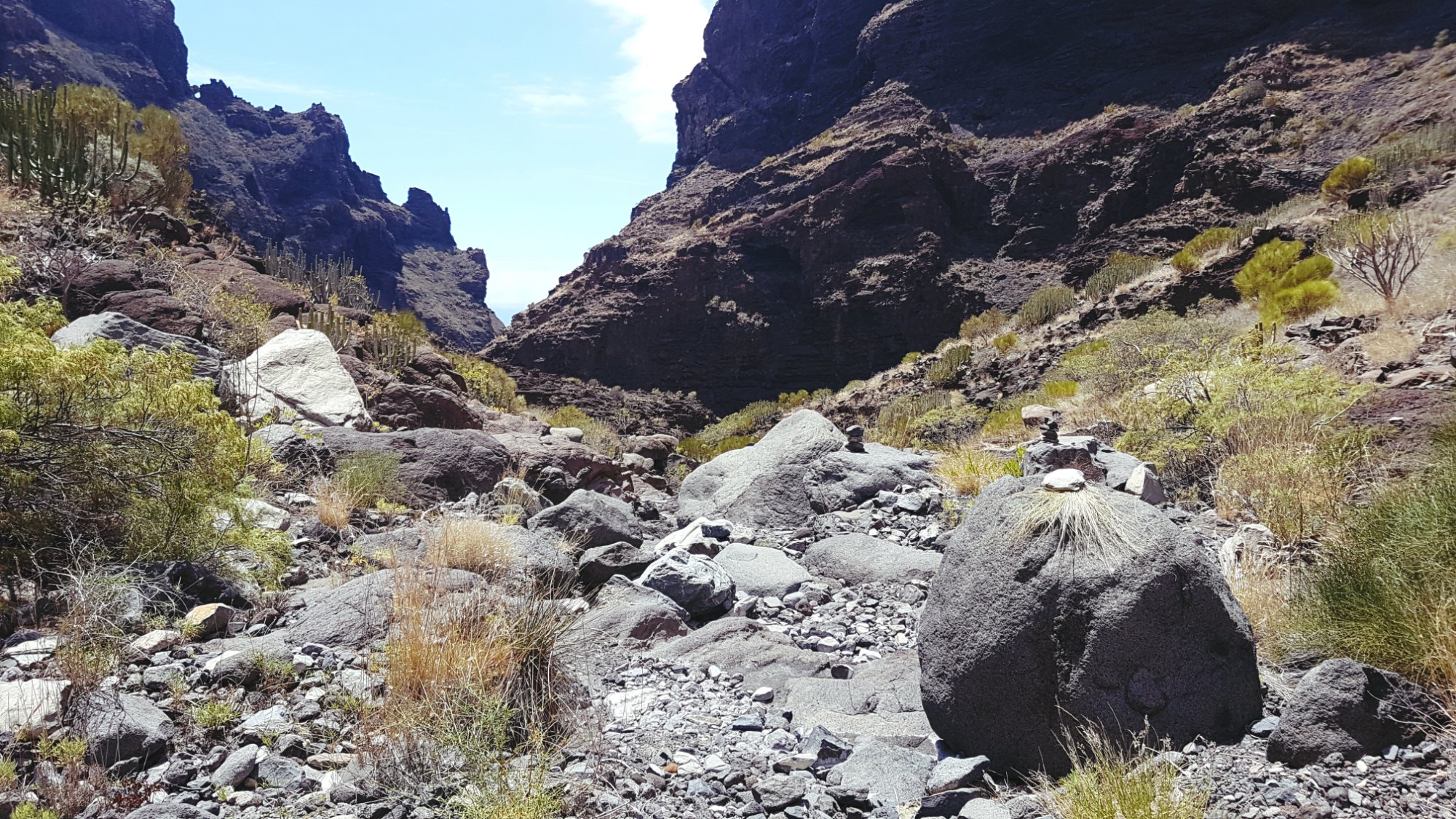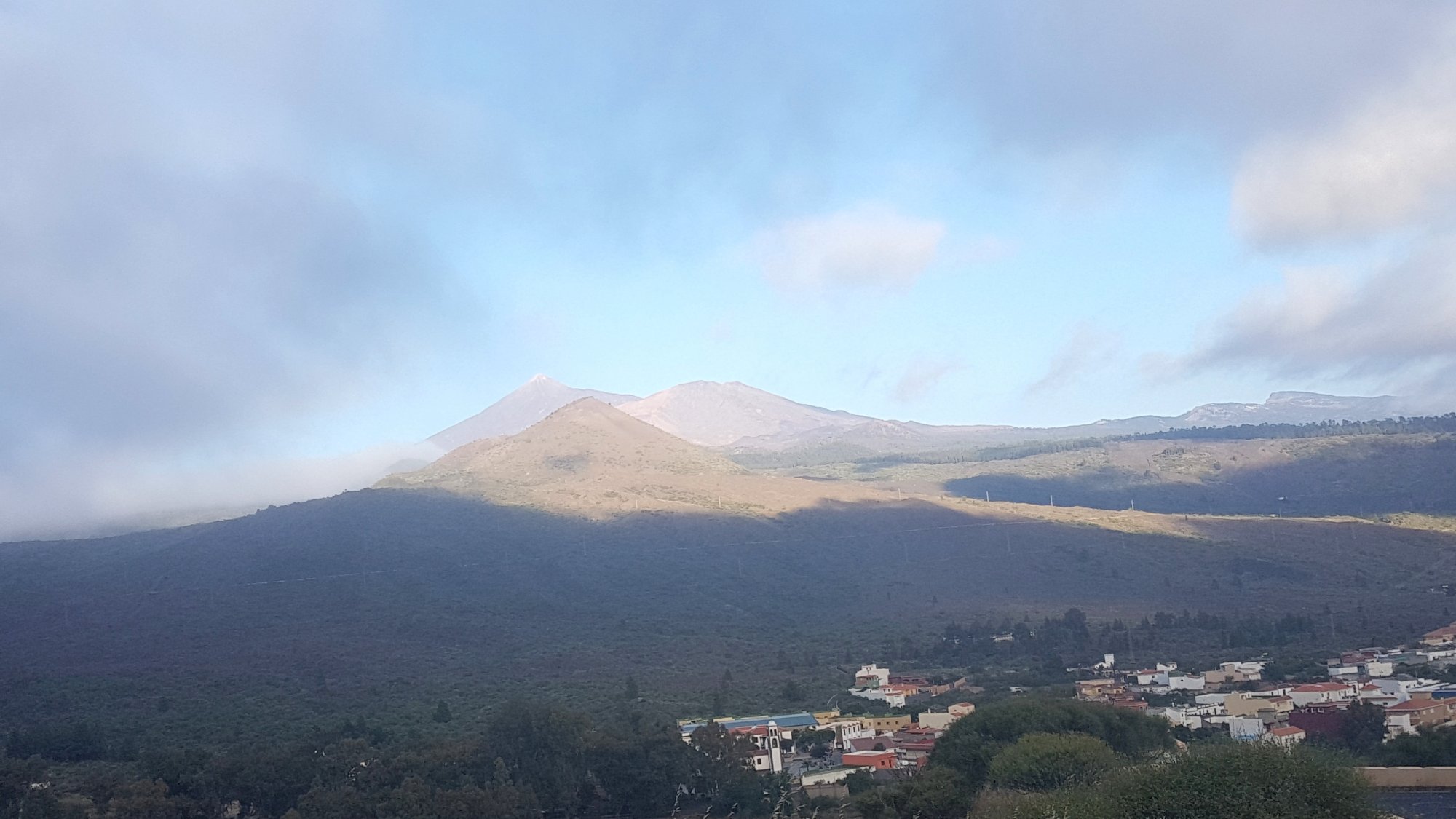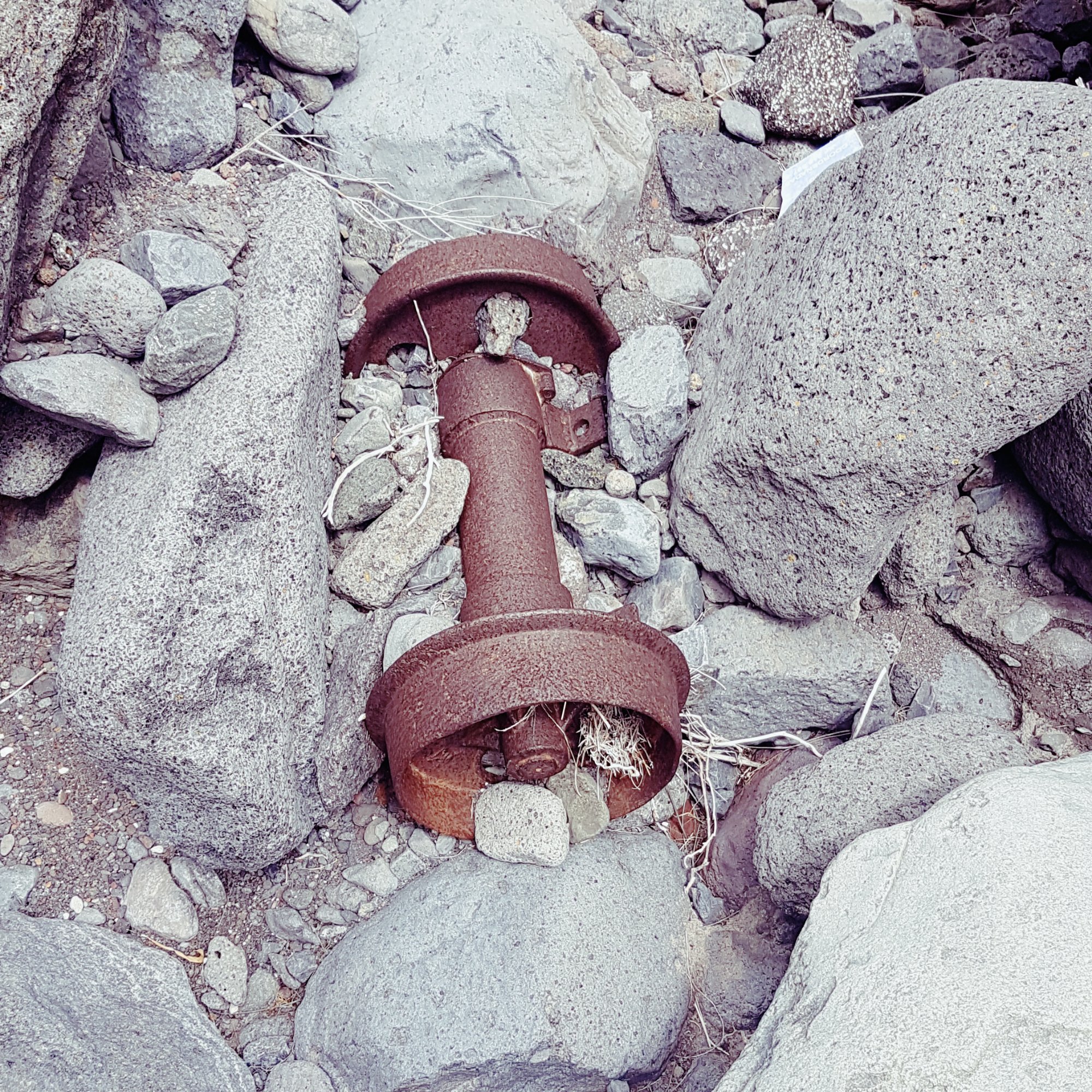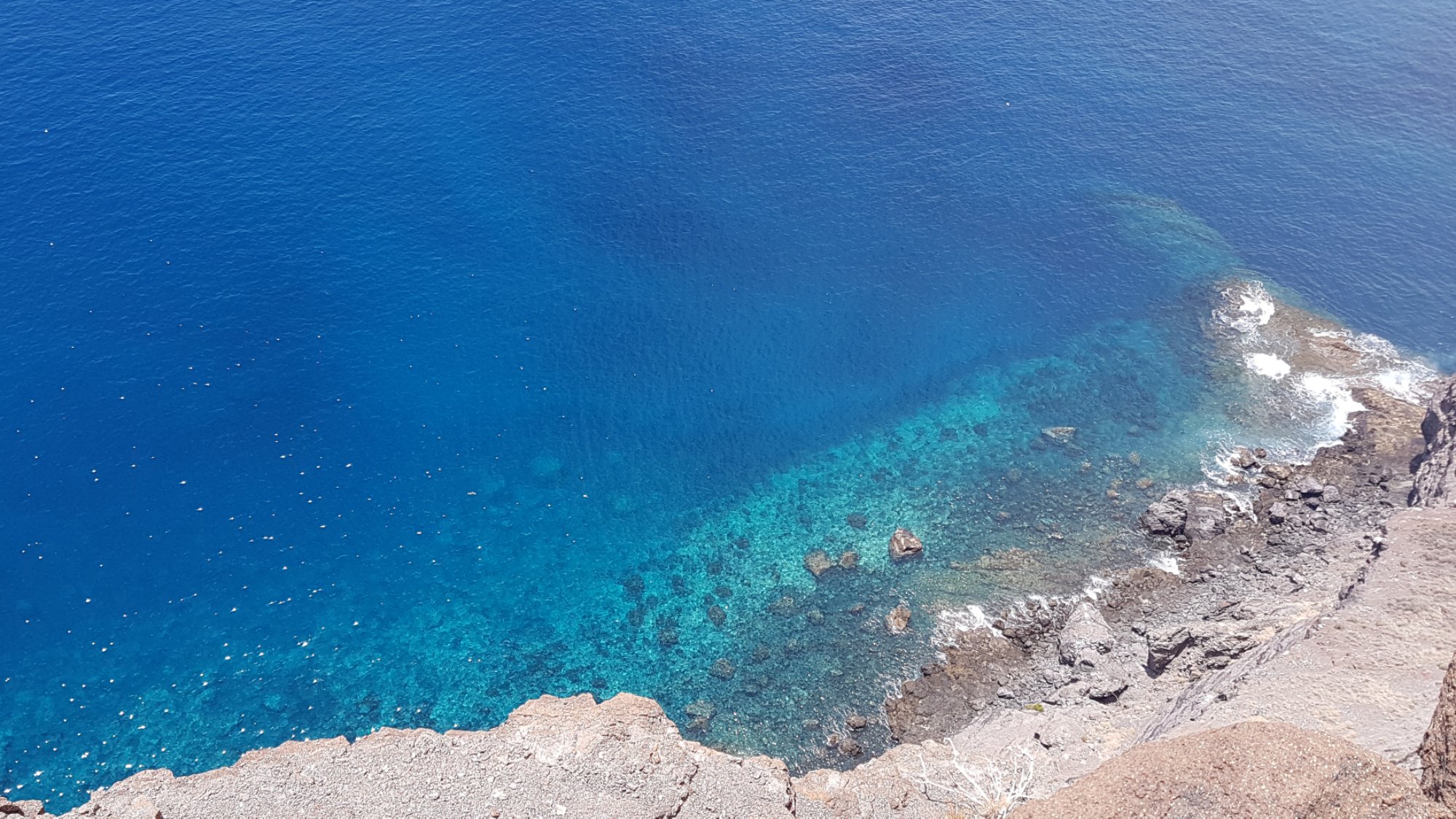After yesterday’s long hike, I decide to take a shorter tour today. Fleeing the morning clouds, I get a Bono bus ticket and head south to Los Gigantes. The Bono ticket is a prepaid ticket which gives significant rebates on the fare and eliminate paying on the bus.
In Los Gigantes, the sun is burning hot and in spite of the 25° C in the shade it feels more like 35°. The town and surrounding towns seem pure tourist center with hotels, appartment complexes and clubs everywhere. Interestingly, in contrast to Puerto de la Cruz, the tourists seem to come primarily from the UK and Eastern Europe. Most signs are also in English and Russian and/or Polish.
Los Gigantes takes its name from the 400 meter high cliffs that start rising up right at the edge of town.
I plan to take a rougly 12 km hike along the cliffs and back to Santiago del Teide.
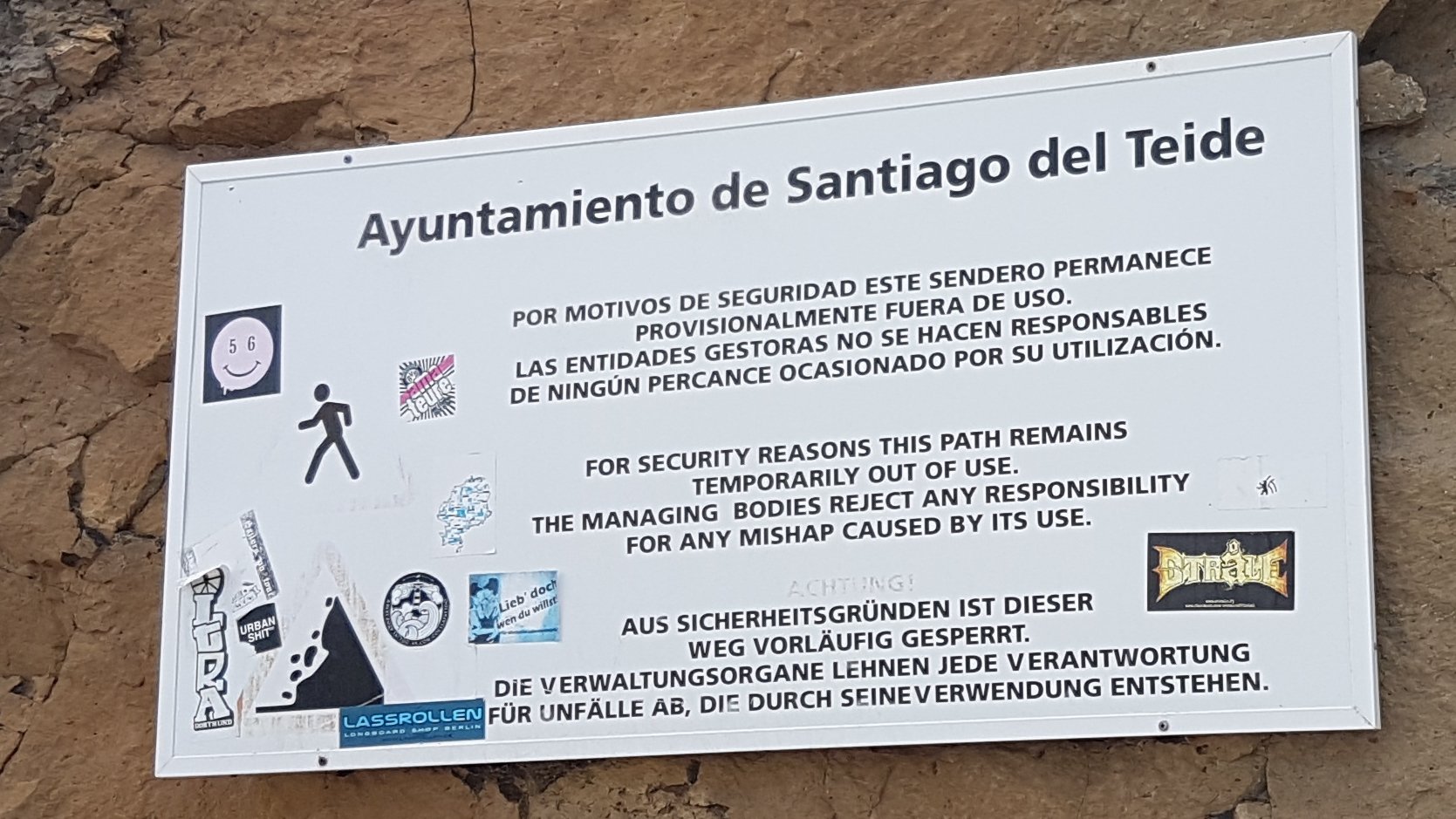
The start bodes well: path temporarily closed for security reasons, use at own risk. Considering the thousands of fat tourists nearby that’s what I would write, too.
The narrow path follows the cliffs at about 100 m elevation and is, aside from a few short climbing passages, not really difficult. The view on the cliffs and the azure sea is magnificient, though. I meet only one lonely hiker during the first hour of my tour. Just below the highest cliffs I meet three Spanish guys and shortly after a Polish couple who’ve come the other way from Masca.
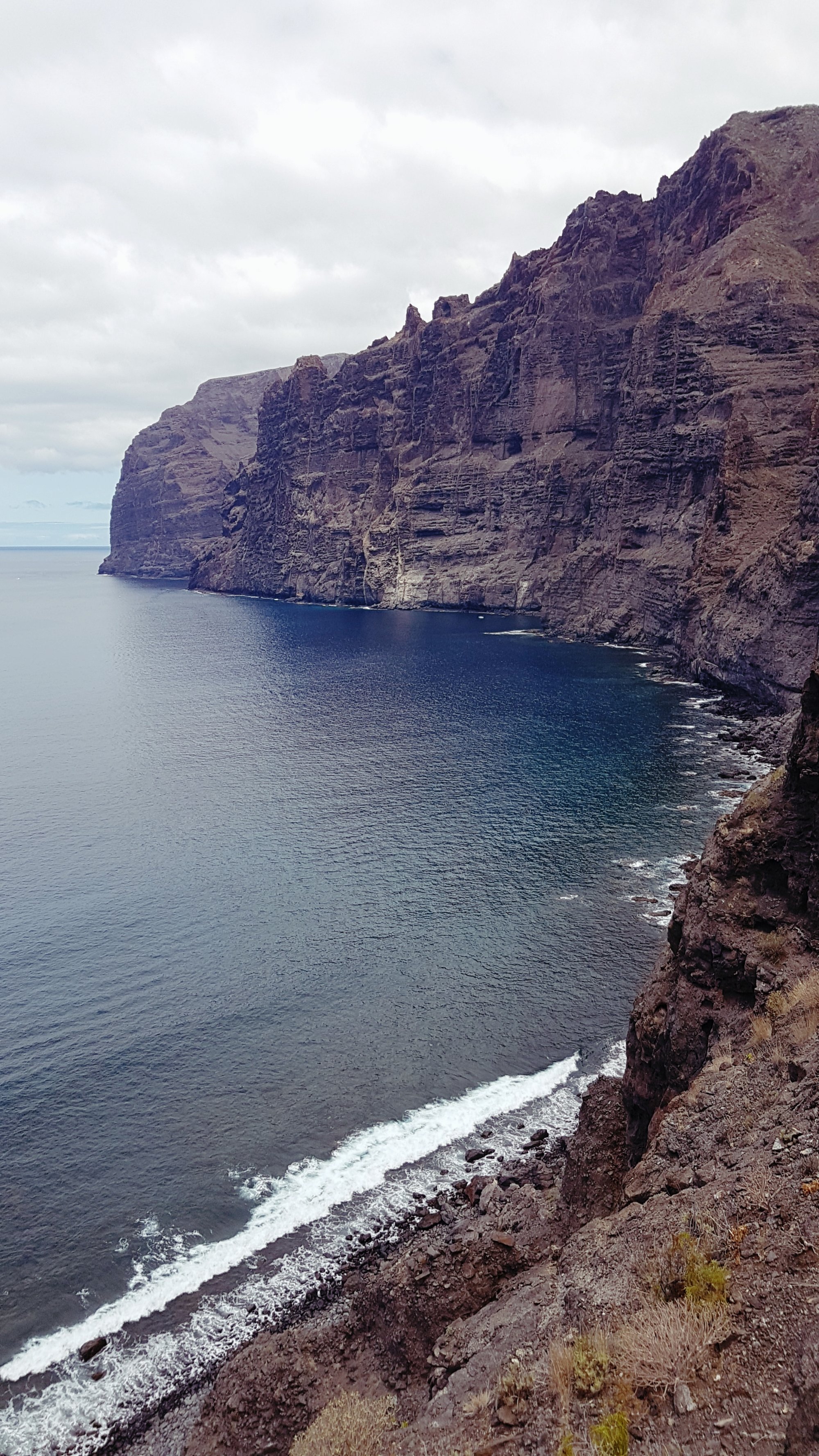 The spaniards say the way is long bit the beginning is easy through “el camin”. I think they’re referring to a natural rock chinmney, but soon after get to see the truth: a tunnel leads through the mountain. The tunnel runs alongside a water channel. Darkness looms ahead and I switch on my phone’s torch, having left my headlamp at the hotel. At the far end I can see a tiny pinpoint of light. The tunnel is almost exactly one kilometre long and it takes me 10 minutes to cross through it.
The spaniards say the way is long bit the beginning is easy through “el camin”. I think they’re referring to a natural rock chinmney, but soon after get to see the truth: a tunnel leads through the mountain. The tunnel runs alongside a water channel. Darkness looms ahead and I switch on my phone’s torch, having left my headlamp at the hotel. At the far end I can see a tiny pinpoint of light. The tunnel is almost exactly one kilometre long and it takes me 10 minutes to cross through it.
Now the real adventure starts. Turning towards the sea I take the path which is obviously less travelled. It follows another water channel at first, then descends into the dry river bed. Going downstream is fairly easy, though some climbing is necessary at times.
When I reach the “lonely, inccessible beach” that I’ve expected, the bay is swarming with tourist boats. The rocky beach is mercifully untouched, probably because of the myriad of signs saying it’s closed due to rockfall danger. I merrily ignore the signs, skip over the loose rocks and start the second leg of my journey up the next river gorge.
And what a gorge it is! Grand, deep, wild and most of all pretty much untouched. Which is kind of the problem. The path is more often than not hard to find and only marked with little rock piles. Twice I climb up the wrong side of the gorge and have to turn back. Suddendly I hear what sounds like dogs barking and I wonder how any dog can navigate this terrain. Turning around the next corner shows it’s mountain goats shouting into a cave entrance.
While it’s not that hot anymore, I’m running low on water and the river is dry. The constant pathfinding and climbing up the gorge’s cliffs is exhausting and when I reach another tunnel leading towards Masca, I consider taking it. It is slighly flooded, though, and Masca is not the right direction.
Another 500 m uphill I finally reach a road and continue towards Santiago del Teide. The evening sun clears the clouds and I see the Teide summit for the first time.
A vending machine is my saviour, providing much needed liquids, as I wait for the bus.

